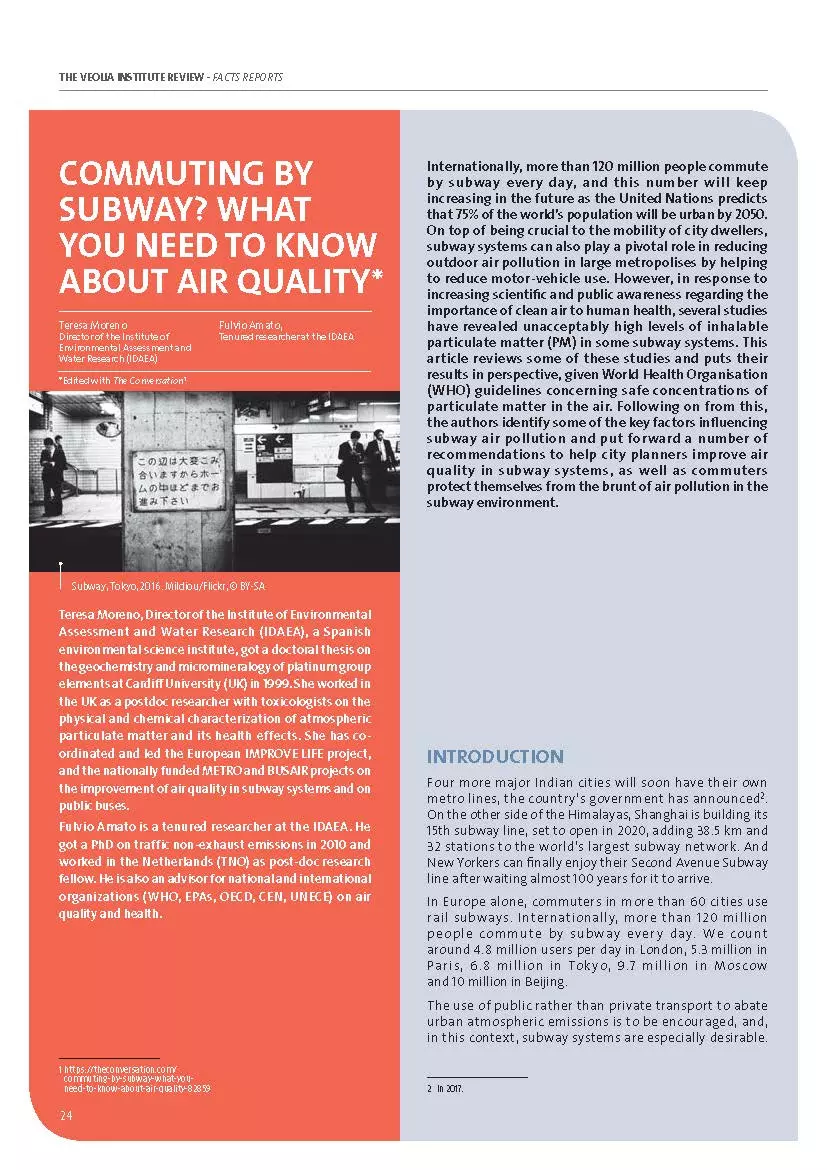Teresa Moreno
Director of the Institute of Environmental Assessment and Water Research (IDAEA)
Fulvio Amato
Tenured researcher at the IDAEA
Internationally, more than 120 million people commute by subway every day, and this number will keep increasing in the future as the United Nations predicts that 75% of the world’s population will be urban by 2050. On top of being crucial to the mobility of city dwellers, subway systems can also play a pivotal role in reducing outdoor air pollution in large metropolises by helping to reduce motor-vehicle use. However, in response to increasing scientifi c and public awareness regarding the importance of clean air to human health, several studies have revealed unacceptably high levels of inhalable particulate matter (PM) in some subway systems.
This article reviews some of these studies and puts their results in perspective, given World Health Organisation (WHO) guidelines concerning safe concentrations of particulate matter in the air. Following on from this, the authors identify some of the key factors infl uencing subway air pollution and put forward a number of recommendations to help city planners improve air quality in subway systems, as well as commuters protect themselves from the brunt of air pollution in the subway environment.



